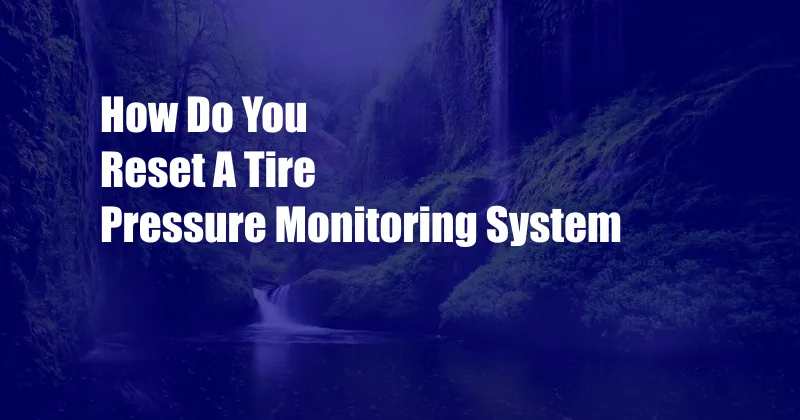
How to Reset a Tire Pressure Monitoring System
Have you ever gotten into your car and seen the dreaded “Check Tire Pressure” light illuminated on your dashboard? It can be a frustrating experience, but it’s important to take care of right away for both safety and financial reasons. Driving on underinflated tires can reduce your fuel efficiency, increase your risk of a flat tire, and even damage your tires prematurely.
Fortunately, resetting your tire pressure monitoring system (TPMS) is a relatively simple process that you can do yourself. In this article, we will provide you with a step-by-step guide on how to reset your TPMS, as well as some tips and expert advice to help you keep your tires in good condition.
Understanding Your TPMS
A TPMS is a safety feature that monitors the air pressure in your tires and alerts you if any of them are underinflated. TPMS systems have become increasingly common in recent years and are now required by law in all new vehicles. There are two main types of TPMS systems: direct and indirect.
Direct TPMS systems use sensors mounted on each wheel to measure the air pressure. These sensors transmit the data to a receiver in the car, which then displays the tire pressure information on the dashboard. Indirect TPMS systems do not use sensors on each wheel. Instead, they measure the rotational speed of each wheel and use an algorithm to estimate the tire pressure.
Resetting Your TPMS
The steps involved in resetting your TPMS system will vary depending on the make and model of your car. However, the general process is the same for most vehicles.
- Inflate your tires to the correct pressure. The correct tire pressure for your vehicle can be found on a sticker on the driver’s door jamb or in your owner’s manual.
- Turn on the ignition. Do not start the engine.
- Find the TPMS reset button. The location of the reset button will vary depending on the make and model of your car. It is usually located under the steering wheel, in the glove box, or in the center console.
- Press and hold the reset button. Hold the button down for about 30 seconds, or until the TPMS light on the dashboard begins to flash.
- Release the reset button. The TPMS light should turn off after a few seconds.
- Start the engine. The TPMS system will now be reset.
Tips and Expert Advice
Here are some tips and expert advice to help you keep your tires in good condition and avoid having to reset your TPMS system:
- Check your tire pressure regularly. Tires lose air pressure naturally over time, so it is important to check them regularly and inflate them to the correct pressure.
- Rotate your tires. Rotating your tires every 5,000 to 8,000 miles helps to ensure that they wear evenly and last longer.
- Avoid overloading your vehicle. Overloading your vehicle can put extra stress on your tires and cause them to lose air pressure.
- Have your tires inspected by a professional mechanic. A professional mechanic can inspect your tires for any signs of damage or wear that could lead to a flat tire.
FAQ
Q: Why does my TPMS light keep coming on?
A: There are several reasons why your TPMS light may keep coming on. The most common reason is that one or more of your tires is underinflated. Other possible causes include a faulty TPMS sensor, a problem with the TPMS receiver, or a problem with the wiring. If your TPMS light keeps coming on, it is important to have it checked by a professional mechanic.
Q: Can I drive with the TPMS light on?
A: It is not recommended to drive with the TPMS light on. Driving on underinflated tires can reduce your fuel efficiency, increase your risk of a flat tire, and even damage your tires prematurely. If your TPMS light comes on, it is important to have it checked and repaired as soon as possible.
Conclusion
Resetting your tire pressure monitoring system is a relatively simple process that you can do yourself. By following the steps outlined in this article, you can keep your tires in good condition and avoid the risks associated with driving on underinflated tires.
Are you interested in learning more about tire pressure monitoring systems? Leave a comment below and let us know what you would like to know.